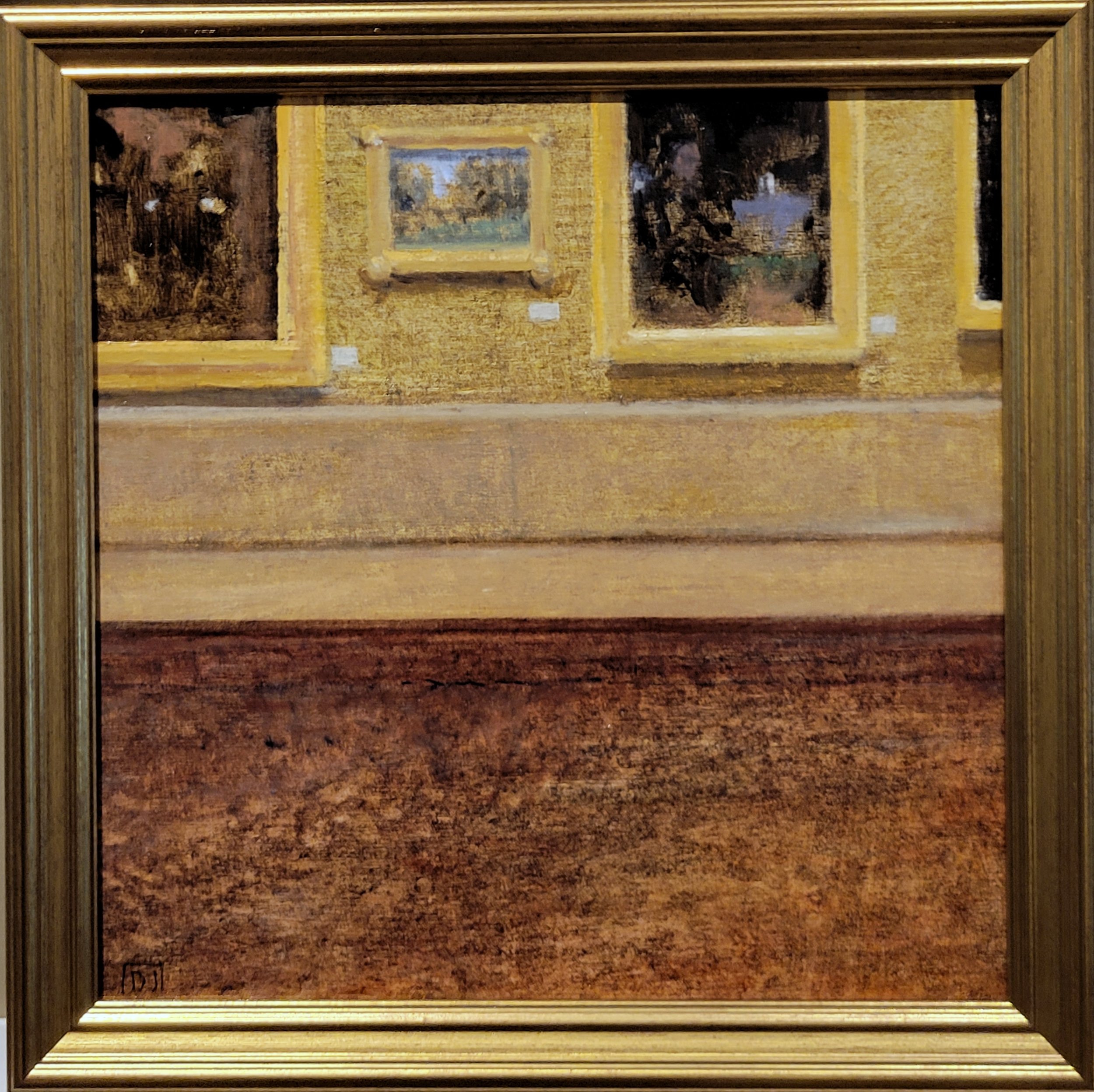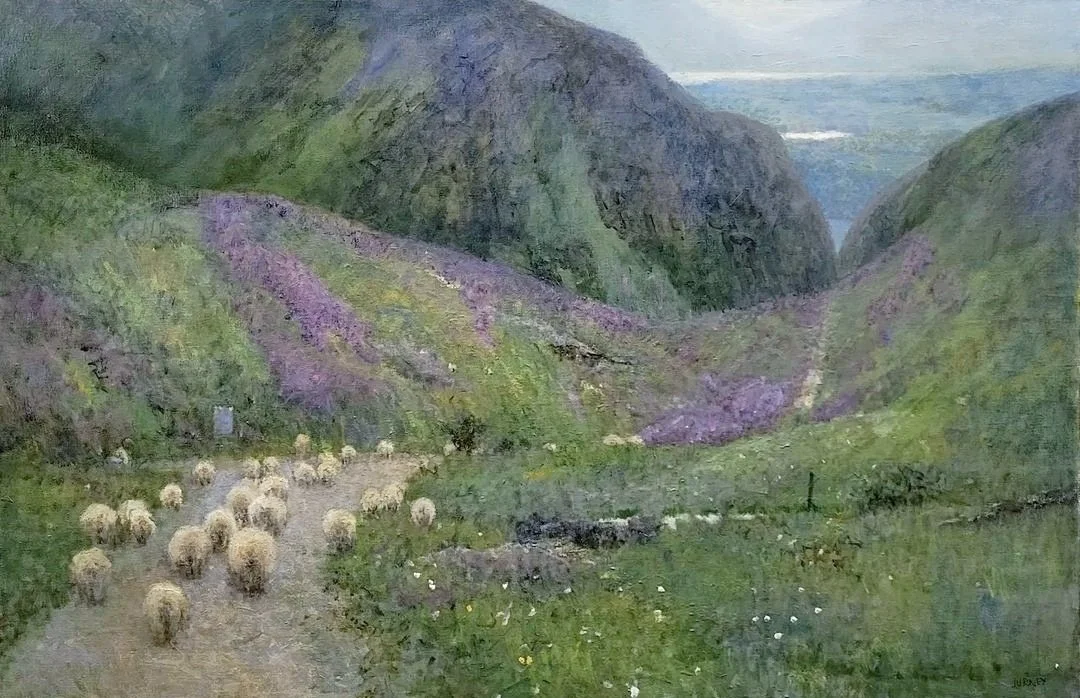Newburyport Art is elated to present its newest featured exhibition Donald Jurney: New Paintings in the Hills Gallery. A longtime supporter of the NAA, Jurney was awarded a Lifetime Membership for his “Outstanding Contributions to the Arts” in 2015.
-
“I hope you enjoy this group of eighty small paintings. They have all been made over the last nine months and have afforded me the opportunity to explore many ideas, some of which are new departures for me.
A few were begun en plein air, but the majority are from imagination, informed by my travels and by many, many years of studying the world around us.
The thread linking them is, of course, my desire to show you what I’ve been thinking about. They are the product of what Winston Churchill once called “a joyride in a paintbox.”
Best,
Donald -
The following is taken from the exhibition prospectus, provided by Donald Jurney and Ginny Williams.
-
Donald Jurney was born in Rye, New York, in 1945, and was educated at Columbia University, the Pratt Institute, and the Art Students League.
Jurney’s work is firmly rooted in the great landscape tradition, stretching from Dutch 17th-century painting through the Barbizon and Hudson River Schools, to late 19th- and early 20th-century French and American impressionism. Nonetheless, one cannot mistake the evidence that his work is also informed and enlivened by the influence of modern painting. It is this union, one of timeless motif and of lively surface, that distinguishes his work from both his predecessors and his contemporaries, making his paintings very much of our time, and instantly recognizable.
Particularly in the period between 1870 and the famous 1913 Armory Show, landscape painting dominated the world of art. It engaged the viewer with contemporary views of the world while exploring the intersection between man and nature. With the arrival of modern painting this conversation was abandoned, cast aside in favor of a formalist investigation of the nature of painting itself. With few exceptions, such as the work of Fairfield Porter, landscape painting lay virtually dormant for 60 years, until the 1970s.
At the time Jurney first began, realist work — and especially landscape painting — was considered deeply old-fashioned. Art had, apparently, progressed beyond such quaint notions.
Running counter to that belief, Jurney was committed to the view that understanding our relationship to the places around us, having ‘a conversation’ with our precarious world, was more important than ever before. He continues to believe that we grow in richness as we train ourselves to perceive the subtleties of the land, both in its timelessness and in its ever-shifting vitality. Jurney invites us to explore what Patrick Kavanagh has called “the undying difference in the corner of a field.” His paintings are a summons to celebrate the poetry of the commonplace.
Jurney’s work, like that of many of the masters he respects, begins with pencil drawings in the field. Exploring the particulars of a chosen place, he carefully records the information, which he will later need in the studio. Sometimes several years will elapse before the drawing becomes the motif for a new painting. In the studio, from his deep understanding of the vocabulary of nature, coupled with a keen sensibility and great skill, comes a painting with the indelible stamp of a certain day and hour, of a particular weather, and with a unique sense of place.
At first glimpse, his work is profoundly based in traditional landscape painting. But a closer look reveals that the tree, which we see as millions of leaves, is, in fact, a dense matrix of quite random marks, combining to give the impression of great detail. Through great economy of means, Jurney invites the viewer to enter into a compact with him, one in which the language of painting becomes as important as the subject of the picture itself. Our reward is the pleasure of a traditional realism that is refreshingly, and surprisingly, animated by the vigor of abstraction.
Donald Jurney has lived and worked in the Hudson River Valley, in England, and in the Berkshires. For a number of years, he has painted extensively in France. A recent interest has been kindled by a trip to the West of Ireland, and he has begun exploring the coastal marshes and the estuaries of Boston’s North Shore. But wherever his travels take him, one can be sure of an invitation to come along, through his paintings, and of the chance to share his unique vision of the landscape — inspired by his unflagging enthusiasm for the remarkable world about us.
—Alex Hulse, Arcadia Gallery, 2007
An exhibition prospectus has been provided by Donald Jurney and Ginny Williams, providing a walkthrough of eighty new small works, complemented by a more in-depth review of Jurney and his many accolades.
All eighty paintings are oil on 10” x 10” linen canvas laid to archival board, framed simply in gold; total dimensions are just under 12” x 12”. While the show’s main focus is on this impressive set of new smaller works, an award-winning larger work is also on display. Sheep May Safely Graze was recently presented with The Alden Bryan Memorial Prize for Landscape Painting from the Guild of Boston Artists.
Be sure to visit during the public Opening Reception, where you can meet the artist and enjoy light refreshments: Saturday, September 10th (5-7:30pm).
*Please note that some paintings may not appear in the online gallery/shop if they are currently on hold for purchase. All works will, however, remain on display in the galleries through the duration of the exhibition.

















































































